Click on images to enlarge

infestation (Photo: Chris Gardiner)
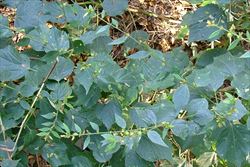
habit (Photo: Sheldon Navie)
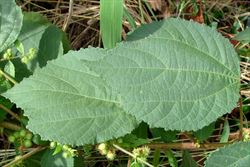
larger and broader lower leaves (Photo: Sheldon Navie)

the leaves sometimes have three-lobed margins (Photo: Sheldon Navie)
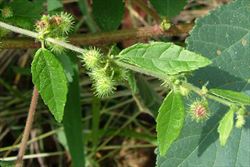
much smaller and narrower uppermost leaves (Photo: Sheldon Navie)

clusters of flowers in the upper leaf forks (Photo: Chris Gardiner)
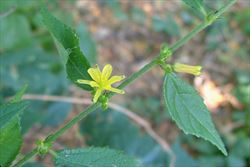
close-up of hairy stem and flower with five petals, five sepals and about ten stamens (Photo: Sheldon Navie)
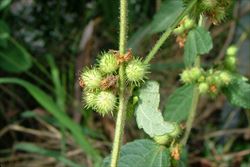
close-up immature fruit covered with hooked spines (Photo: Sheldon Navie)
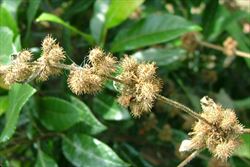
close-up of mature fruit (Photo: Sheldon Navie)

close-up of seeds (Photo: Steve Hurst at USDA PLANTS Database)
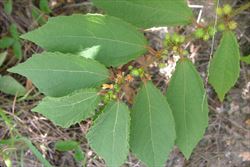
upper leaves and flower clusters of Triumfetta pentandra (Photo: Sheldon Navie)
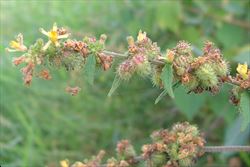
close-up of flowers and immature fruit of Triumfetta pentandra (Photo: Sheldon Navie)
Scientific Name
Triumfetta rhomboidea Jacq.
Synonyms
Triumfetta bartramia L.
Family
Sparrmanniaceae (Queensland)Tiliaceae (New South Wales, Western Australia and the Northern Territory)
Common Names
bur bush, burr bush, Chinese bur, Chinese burr, diamond burbark, hibiscus burr, paroquet bur, paroquet burr, triumfetta weed
Origin
This species probably originated in tropical America, but its native distribution is obscure. It is now widely distributed throughout the tropical regions of the world (i.e. pan-tropical).
Naturalised Distribution
Sometimes considered native to Australia, but now largely beleieved to be widely naturalised in the northern and eastern parts fo the country (i.e. the northern parts of the Northern Territory, northern and eastern Queensland, and north-eastern New South Wales). Also naturalised on Norfolk Island.
Notes
Chinese burr (Triumfetta rhomboidea) is regarded as an environmental weed in Queensland.

